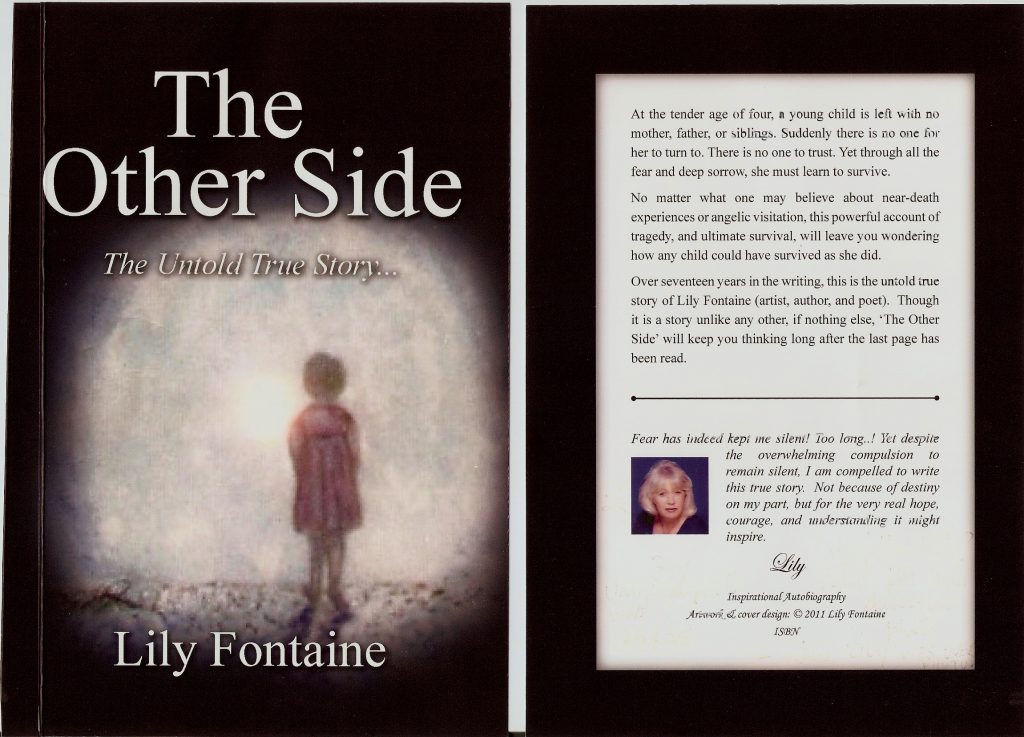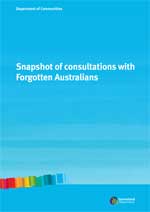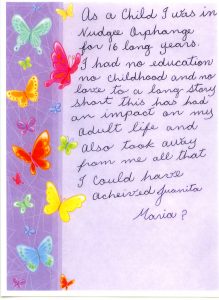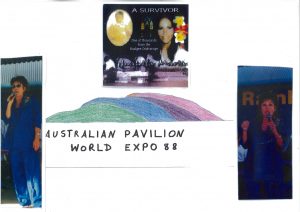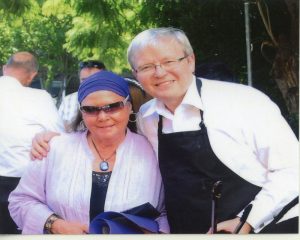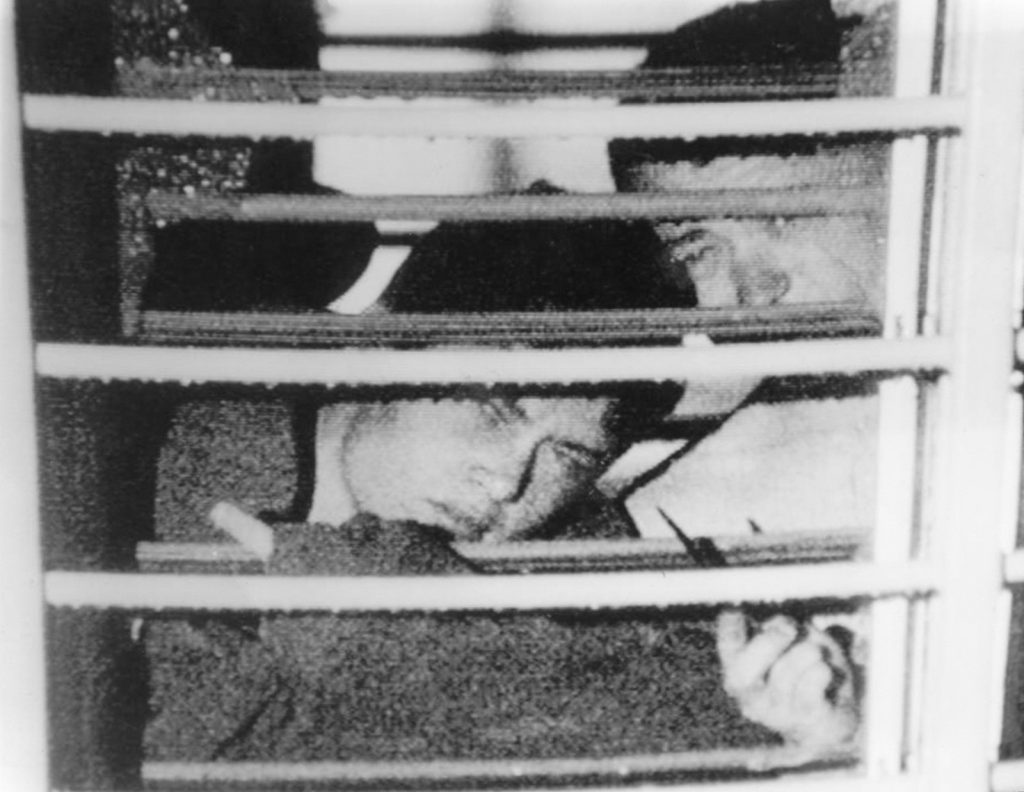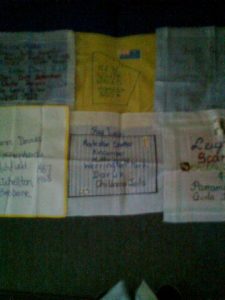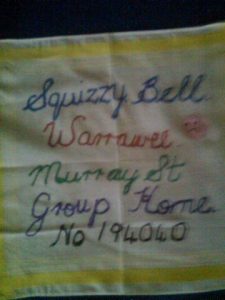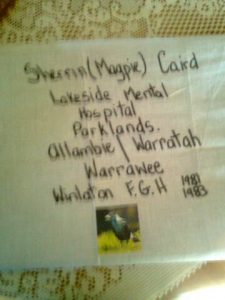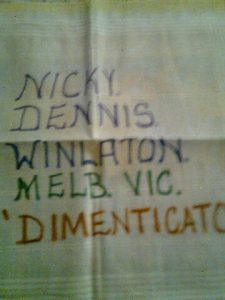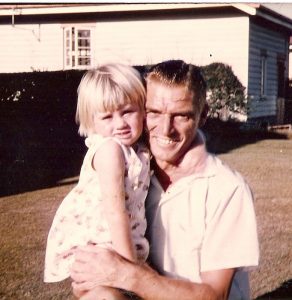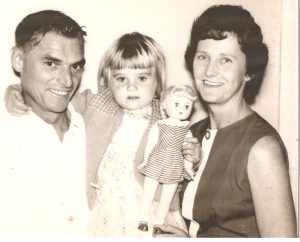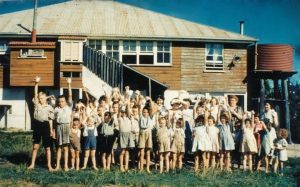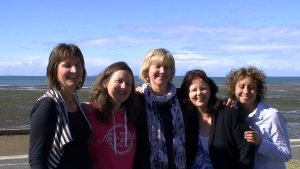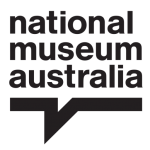‘I stopped correcting them, and certainly stopped respecting them’: Jessica Dalton describes her time at Lowson House, Royal Brisbane Hospital, in 1980. Jessica was 20 at the time but some of her experiences were similar to those recounted by Forgotten Australians who were admitted to adult wards of psychiatric hospitals as children.
I had taken an overdose after being dumped by my first boyfriend, and when I began vomiting I told my mother what I’d done. She took me to RBH where she worked and I was admitted to Lowson House where I was kept in isolation for three days on the locked female Ward D. Before being discharged, I was examined by a room full of doctors, students and staff. The registrar assigned to my case argued that I was schizophrenic and should remain in Lowson House for treatment. The psychiatrist invited me to give my version of events and I explained that I was very unhappy at home and when my boyfriend dumped me I wanted to die. However I didn’t die and I thought my best plan was to return to finish my schooling so that I could get a decent job or go on to uni and get out of home as soon as possible. He agreed with my interpretation of events and I was released.
When I was 20, I had finally made it to uni and had become extremely anxious prior to first semester exams. One night I couldn’t deal with the anxiety and walked to RBH and asked for help. I hoped that I would find intelligent reasonable people with expertise to help me deal with my emotional problems and mental distress. The anxiety was so excruciating that I told the doctor at admissions that if they couldn’t help I’d probably have to end my life. I was admitted to Lowson House again and the same psychiatric registrar I had met when I was 16, was appointed as my psychiatrist. She remembered me and told me that now I would get the treatment I should have received when I was 16. Although I had admitted myself voluntarily, I became an involuntary patient. I revealed that I had been sexually abused over the first 12 years of my life which I believed was the source of my mental distress, but this was interpreted as delusional, reinforcing the diagnosis of schizophrenia. I was heavily medicated, refused leave to attend my final exams, and refused leave to attend another doctor for a second opinion. I asked if I was entitled to a second opinion and my psychiatrist said that of course I was. So when I asked for leave she would smile and refuse. If I tried to discharge myself, I was put on an involuntary order and sent back to D Floor, the locked ward. If I refused medication, I was sent back to D Floor. If I refused again I would be held down by orderlies and nurses, have my jaw prized open and have syrup poured down my throat. I stopped there. The next step was injections. I couldn’t win that battle.
In the first few days on D floor I felt so heavily medicated that I used to fall over if I got up from bed, or stood up suddenly from sitting position. They made me go up to E Floor for ‘recreation’. I kept falling over and the orderlies made me crawl up the stairs, laughing at me and kicking me with their boots. Up on E Floor, sometimes people paced up and down but they’d be yelled at and made to sit down and be quiet. Mostly the patients sat around the room in the chairs lined up against the walls staring speechless into space, some drooled, until we were allowed to go downstairs again.
They did conduct tests on me including inkblot tests, intelligence tests and a couple of EEGs. I don’t know how my responses to the inkblots were interpreted but I had the feeling at the time that it didn’t really matter what I said, it would be interpreted however my psychiatrist wanted it to be interpreted. Whatever results didn’t fit the diagnosis, were discarded as irrelevant or false, rather than revisit the diagnosis. I remember the psychologist bailed me up in the corridor and accused me of cheating on my intelligence tests. I asked how that was possible and she said I must have done them before. I told her I hadn’t, she insisted, so I smiled and asked if she was upset because they were higher than hers, and would she like me to repeat them in order to produce a lower score? She was furious, stormed off and she had no more contact with me. I didn’t really understand the ramifications of showing disrespect to the staff in this way but I believe I tried to be totally honest with them initially. But they didn’t believe me when I told the truth or they twisted what I said to mean something else. I resisted their definitions of me but they still got inside me and hurt.
The EEG results indicated some sort of electrical disturbance similar to epilepsy, but that was not investigated. The psychiatrist insisted I must have been blinking, even though I wasn’t. I complained of the smell on D floor caused by faeces smeared on the walls in the toilets. That was interpreted as olfactory hallucinations. I complained of feeling like a slug because of the effects of the medication. That was interpreted as a psychotic Kafka-esque metamorphosis. I stopped correcting them, and certainly stopped respecting them. My psychiatrist explained that I didn’t like her because I was projecting my hatred of my mother onto her. I assured her that I hated her for herself.
The psychiatrist refused to give me leave to have dinner with a dear friend who had come from Sydney to see me, when I actually wanted to go out. Well she didn’t initially refuse the leave, it was cancelled without reason at the last minute when my friend arrived to pick me up. Yet I was forced to go on weekend leave to my parents’ place although I begged them not to make me go … until I overdosed on my father’s heart medication and spent a week in coronary care. Then my parents decided that they wouldn’t have me and I was spared those visits. One registrar argued my case for me with the psychiatrist to trial me off the medication, but I guess he was disciplined because he wasn’t allowed to speak with me again.
Occupational therapy involved making a teapot stand with matchsticks or little tiles. I was never a really crafty person. Then they decided I should learn to type. I was put in front of a broken typewriter in a cramped and messy office or storeroom with an old book on learning to type. I was left alone and supposed to do something with that. The ribbon was worn out, keys were broken and I was medicated to the eyeballs. I was labelled as non-compliant and that was the end of my rehabilitation.
The food was revolting and at first I didn’t eat it. But eventually I lined up like everyone else, ages before the meal was served, in that long shuffling, dribbling line of human despair. Everything looked and tasted like porridge. I ate flies and bugs caught up in the food without a care. I put on four stone in weight.
I felt so tired and heavy, like my veins were filled with concrete. I didn’t want to get up, all I wanted to do was sleep. But every morning at 5 o’clock I was dragged out of bed, had cold water thrown on me a couple of times, and forced up to E floor for morning exercises. This consisted of orderlies physically placing us in rows facing the staff member who enthusiastically jumped about like a wannabee PE teacher or aerobics instructor, complete with whistle around his neck. Well, I’ve never been good at aerobics either but being drugged up at 5.30 in the morning, surrounded by people in a similar or worse state, did not inspire me … it was humiliating torture. And I’d be yelled at and called names, which also did nothing to improve my performance. I didn’t complain about all the courses of ECT because at least on those days I didn’t have to go for morning exercises and I really liked the IV valium. I had a really good peaceful sleep-in on those mornings.
I remained in Lowson House for 13 months, continued to be heavily medicated, received three courses of ECT, was not allowed to discuss the sexual abuse, and became totally dehumanised, demoralised and institutionalised by my experiences there. Although suicide had originally been an option to relieve the anxiety, I perceived it to be my only option after treatment at Lowson House. I managed to summon the energy to make a couple of attempts, which were not successful. Sadly, others I knew managed to do the job properly. One man put his head under the wheel of a reversing truck while being walked to the canteen. I remember a nurse who was really annoyed about how inconsiderate that man was, considering the investigation the supervising nurse had to undergo. Another young man on weekend leave with his parents, threw himself off the faculty building at his university where he had graduated with distinction many years before. And another hung herself on the ward after excusing herself to get a tissue during a rowdy ward meeting. I was first back into the bedrooms, walked straight past her blue, lifeless, swinging body across the aisle from my bed and lay on my bed oblivious. Eventually someone else came and screamed. A male patient held up her body, while a young nurse aide ran to find scissors and cut her down. Those two did CPR together on the dead girl till the crash team eventually arrived and took her away. She had recently given birth and been forced to sign adoption papers. Then the nurse aide let loose on me for doing nothing. I don’t blame the nurse for that. How could I not notice? How could I not call for help? I knew why, but she didn’t.
I was not assigned a case-worker because, according to the social worker, she didn’t waste her time on hopeless cases. I began reading my file and was appalled by the fantastic rubbish written up as case-notes, informed by my mother and interpreted by my psychiatrist. Apparently, I was a lesbian because it was documented in my case-notes and all the staff and patients accepted this as fact despite my denials. However, I was not abused as a child because the case-notes said it didn’t happen. I learnt early in my stay not to talk about the abuse, because staff abruptly got up and walked away if I raised the topic.
At one point I did make noticeable improvement and a registrar wanted to write a paper on me because she attributed my remarkable recovery to a new trial drug. I had to tell her that I had not been taking the drug and it was likely that the improvement in my behaviour (I was voluntarily getting out of bed, talking to people and feeling better) was due to not taking medication at all. I was forced to resume medication.
On my 21st birthday I was forcibly carried/dragged by 4 staff into the common room for a party I didn’t want to attend. After the party I stole my file, went to the embankment, drank a bottle of vodka, and burnt every page of my file. Another time I put a poster up on the front entry door to Lowson House. It was a picture of a sinking ship with the caption, ‘Abandon hope, all ye who enter here’. It was ages before the staff even noticed but eventually a visitor complained, an investigation launched and the culprit was tracked down. Yes, some of them really hated me. A new registrar let me read what she’d written in the file, and I was allowed to clarify it, if it was wrong. I thought that was respectful and sensible.
By the time I was to be discharged, my psychiatrist had left RBH and I had declined her invitation to be transferred under her care to another hospital. I don’t think I was allocated a new psychiatrist, because I didn’t see one again. I was not allowed to make my own living arrangements in the community and was given two options: long-term accommodation at Wolston Park or a half-way house called Richmond Fellowship. By this time I had become institutionalised. I felt all my choices had been taken away from me. I had no hope for the future because I really was a mess by then, and besides that I’d been made aware that I should not have children because I would pass my mental disease on to them, and that I would never be able to work again, or achieve anything in my life. I badgered staff to help me make a decision about where to go, but nobody would give me any information about Wolston Park or Richmond Fellowship. The default option would be Wolston Park. I didn’t see how Wolston Park could be worse than Lowson House, I’d be fed and housed. Finally after following a registrar around for days, begging her to tell me what Wolston Park was like, she looked me in the eye and said it was a horrible place where I’d be treated worse than an animal. I asked for an example, so I could differentiate between Wolston Park and Lowson House. She said that at Wolston Park I’d be herded with others, naked, into showers and hosed down. That sounded like a new experience I’d rather not be subjected to.
So I chose Richmond Fellowship, and discharged myself from there when it also proved to be less than helpful. When I arrived there I was not welcomed because a ward meeting was happening, which could not be interrupted. I was allowed to observe it from the corridor. I remember a young woman raised an issue about the way another group member spoke to her or treated her. The person responded by disregarding the complaint and telling her the problem was her inner child. The therapist agreed that she was dominated by her inner child and needed to use her inner adult more. The issue she raised was not addressed and she ran crying from the meeting. I thought that was interesting and some time later in life read about transactional analysis which shed some light on that strange interaction. Then I had to complete several personality tests and was allowed to go to bed. Nobody spoke to me except the therapist conducting the test. I think they purposely made people leave you alone, in order to give you time to settle in. The next day the therapist asked to see me privately because there was a problem with my test results. The problem was that they were good. I didn’t know why that was a problem. He said they were better than most of the therapists. I still didn’t see why it was a problem. Then he told me that they have to show improvement between the before and after tests to justify the effectiveness of their programs. But my after tests wouldn’t be able to show improvement because my before tests were so good, and that was a problem for them. I offered to do them again and try to produce a worse result. He said that he couldn’t do that either, but he was pretty upset about it. I discharged myself and saved them the trouble of solving that dilemma.
After living in a share house for some months with other ex-patients, I was visited by the social worker who didn’t approve of my sleeping all day, eating hamburgers and watching television all night. She informed me that I was still under their supervision and would be re-committed if I didn’t assume a more normal lifestyle. I engaged a private psychiatrist, moved to another share house and never returned to a mental institution.
My life has not been easy, but I have raised a beautiful son to manhood; eventually returned to uni and graduated with honours; and enjoyed a successful career as a primary school teacher. But the horrors of my experiences at Lowson House still haunt me and make me cry. Although my family and very close friends know about it, they understandably don’t want to hear about it. Telling people has proven to be a poor strategy for maintaining friendships. And if I raise it with a mental health professional, I once again lose my credibility when I reveal my former status as a psychiatric patient. So, it is a very lonely experience that I have not really been able to share, and it still weighs heavily on my heart. I remember there were people younger that me at Lowson House, who definitely fit your category of ‘child’ and I hope that at least some of them, like me, were able to recover. Thankyou for the opportunity you are giving people to share their stories.

